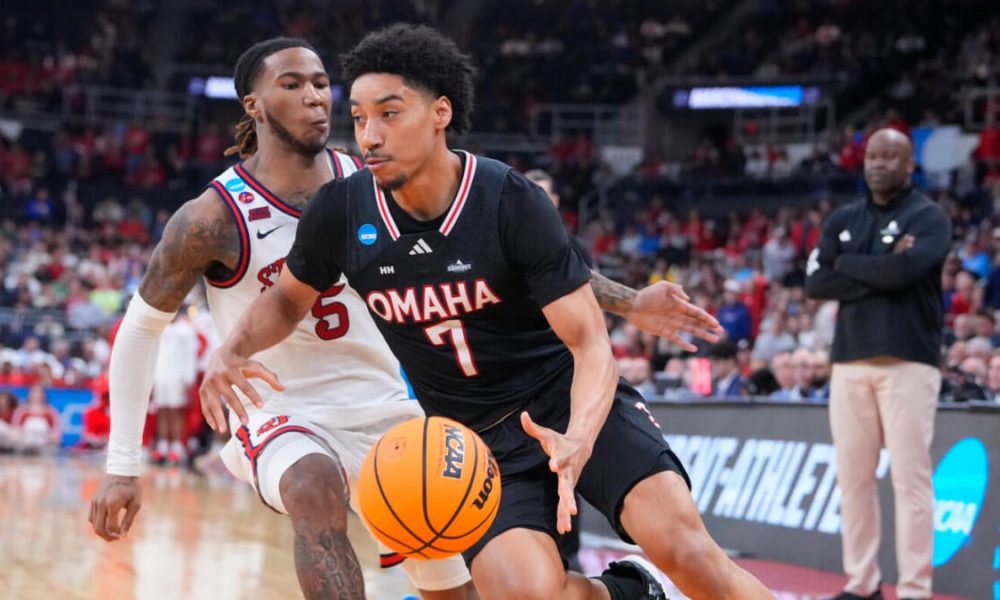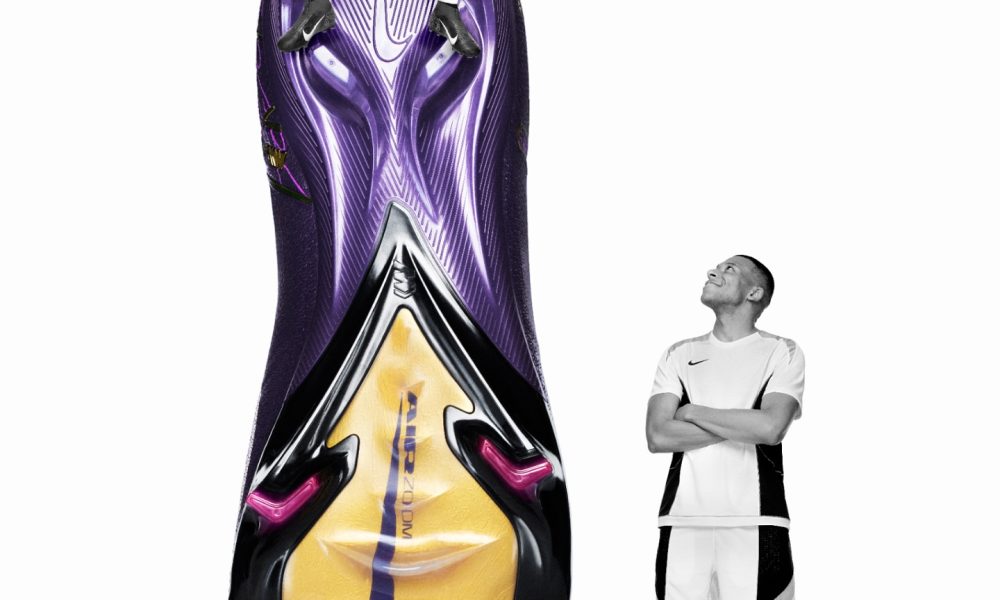Sports
Why Karnataka is Focusing on Siddi Athletes
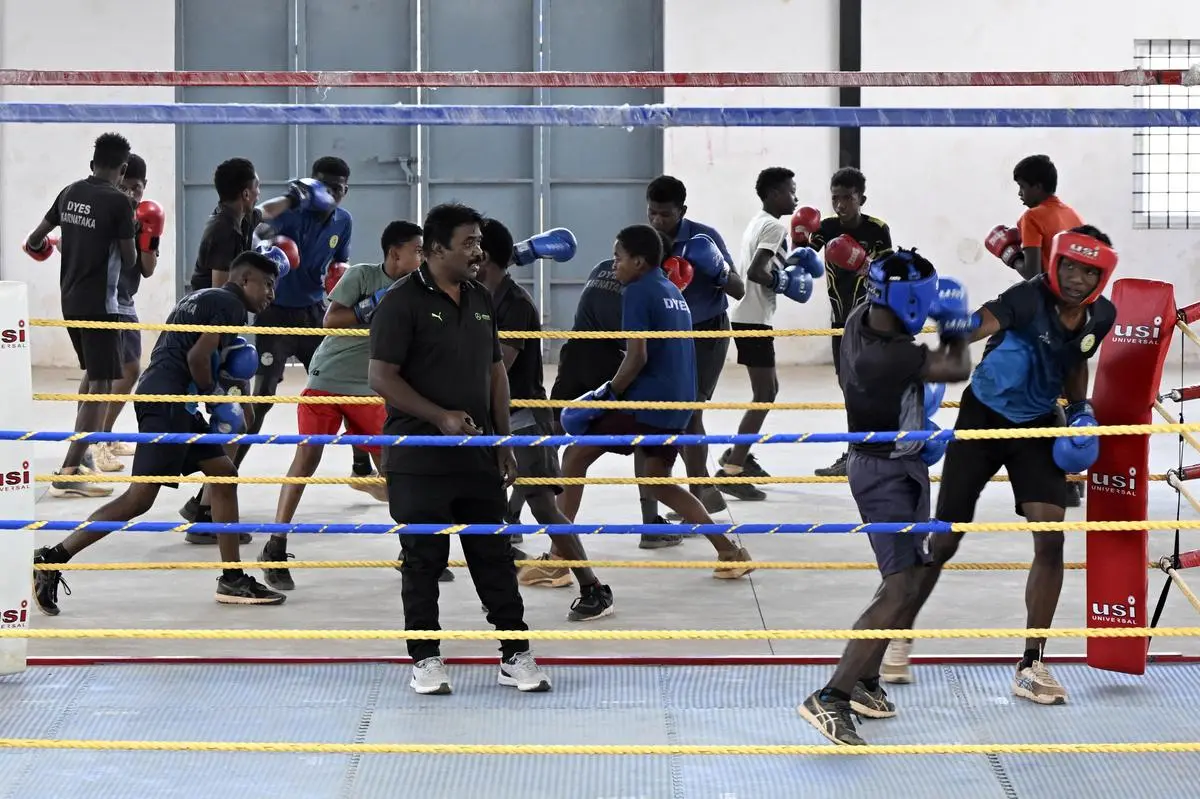
The Siddi youth were a picture of concentration and soon, trails of sweat flowed down their faces.
| Photo Credit:
Sudhakara Jain/The Hindu
According to Nagarathna K.M., Deputy Director of DYES, Vidyanagar in Bengaluru currently has 25 Siddi boys and 14 Siddi girls undergoing training. Of these trainees, six are athletes, while the remaining 34 are novice boxers. “We hope that with DYES support, these children will secure government jobs through sports quotas, achieve national recognition, and serve as role models for their community,” said Nagarathna.Three sports hostels—in Bengaluru, Uttara Kannada, and Chamarajanagar districts—receive annual funding of approximately Rs.1.5 crores through this scheme. The Chamarajanagar hostel offers training in fencing and does not include any Siddis, whereas the hostels in Bengaluru (boxing and athletics) and the Uttara Kannada (wrestling) predominantly consist of Siddi youth, with Bengaluru hosting just one non-Siddi tribal trainee among the boxers.
Siddis have ‘unique advantages in sports’
While numerous tribal communities exist in Karnataka, the significant proportion of Siddis among selected athletes reflects a longstanding belief that members of this African-Indian diaspora make for great athletes and sportspersons. Boxing coach Dhanasanjayan illustrated this by pointing to a six-foot metal fence, explaining, “In my experience, Siddis are physically fitter. When asked to scale this fence, they swiftly leaped across, while other trainees found it challenging”. His coaching has proven fruitful, with several young Siddis winning medals in state-level boxing championships.Maryani arrived at this sports training centre in 2022 after being identified as a promising boxing talent. He was part of the initial cohort of Siddi youth supported by DYES through a scheme aimed at identifying athletic talent among tribal communities in Karnataka (the Siddis are recognised as a Scheduled Tribe in Karnataka). This scheme was funded by the Tribal Sub Plan, mandated by the Karnataka government to ensure departments allocate budget shares proportionate to the tribal population. Since tribals represent nearly seven per cent of Karnataka’s population, seven per cent of each department’s budget is exclusively reserved for tribal communities.Nevertheless, a senior athletics coach based in Bengaluru, who requested anonymity and is familiar with the DYES scheme, raised a pertinent question: “Why are only Siddis selected for this scheme when it is meant for all tribals? Karnataka has 50 communities recognised as Scheduled Tribes. Has the department conducted any scientific tests or pilot studies demonstrating that Siddis possess special physical advantages? There’s no justification for exclusively privileging Siddis, he said.Although this initiative was inexplicably discontinued after a few years, several Siddi athletes achieved prominence, with some even competing internationally for India. Kamala Mingel Siddi, a beneficiary of the 1989 scheme, represented India in three South Asian Federation (SAF) Games (now the South Asian Games). Other Siddi sportspersons from that period secured government jobs through sports quotas. More recently, the Siddi community’s inclination towards sports has continued, resulting in accolades in wrestling, kabaddi, and boxing. For instance, Sushil Kambrekar, a Siddi from Haliyal, was selected last year by the pro-Kabaddi team Bengal Warriors.
 Samantha Saver Siddi, 17, from Ugginakere village in Mundgod taluk, considered by Dhanasanjayan as the best female boxer, shared her experience: “When I first arrived here, I missed my family and our traditional food, which includes a lot of meat, seafood, and even a special red ant chutney. But now I’m accustomed to the food provided here, especially since we get chicken and eggs daily.” The communal housing arrangement has further fostered their orientation and enthusiasm for prolonged training in Bengaluru.
Samantha Saver Siddi, 17, from Ugginakere village in Mundgod taluk, considered by Dhanasanjayan as the best female boxer, shared her experience: “When I first arrived here, I missed my family and our traditional food, which includes a lot of meat, seafood, and even a special red ant chutney. But now I’m accustomed to the food provided here, especially since we get chicken and eggs daily.” The communal housing arrangement has further fostered their orientation and enthusiasm for prolonged training in Bengaluru.
Inside, two boxing rings occupied the centre, with a row of punching bags lining one wall. The teenagers, aged between 14 and 19, formed two separate lines—one for boys and the other for girls—as Dhanasanjayan initiated their warm-up exercises. They jogged on the spot, stretched, did push-ups, jumped, and in one exercise, adopted a boxer’s stance, jabbing the air in front of them. Focused and disciplined, they soon had sweat streaming down their faces. After warming up, the trainees moved to the corners of the warehouse, quickly pulling on red and navy-blue boxing gloves and placing transparent gumshields in their mouths. Equipped and ready, they paired off; some headed to the punching bags, others stepped into the rings.
Dhanasanjayan entered the practice ring where Nikhil Maryani, (Right, wearing red headgear) 18, from Vagginakere village of Mundgod taluk in Uttara Kannada district, was already eyeing his opponent, Steevan Salgatti, also 18, from the village of Tottilagundi in Yellapur taluk in Uttara Kannada district.
| Photo Credit:
Sudhakara Jain/The Hindu
History of the African diaspora in India
While numerous tribal communities exist in Karnataka, the significant proportion of Siddis among selected athletes reflects a longstanding belief that members of this African-Indian diaspora make for great athletes and sportspersons.
| Photo Credit:
Sudhakara Jain/The Hindu
When Siddi boxers initially arrived in Bengaluru, other sporty teenagers residing at SJNNYTC often called them “Africans”. “They were surprised when we spoke Kannada, but they quickly became our friends upon realising we were also from Karnataka,” said Rohan Mohan Siddi, 18, from Yellapur. Although the SJNNYTC campus provides schooling, senior trainees enrolled in Pre-University College (11th and 12th standard) attend classes at a nearby government college, where Rohan encountered curious questions about his racial background.Over the past three years, Dhanasanjayan, who represented India internationally in boxing during the late 1980s and early 1990s, has regularly visited schools in the Yellapur, Haliyal, and Mundgod taluks of the Uttara Kannada district to identify promising Siddi youth for training in Bengaluru. While satisfied with his selections, he noted that many talented Siddis prefer wrestling, as the Haliyal sports hostel offering wrestling is closer to their villages.
 This initial surprise and fascination regarding African-looking Indians are understandable yet reflect ignorance about India’s extensive African diaspora history. The term “Siddi”, used to describe Africans in India, is believed to be derived from “Sayyid”, which means “master” or “lord”, highlighting the influence of Muslim culture in the migration of Africans to India. Historical accounts suggest that the name could have been derived from the title borne by Arab captains (sayyids) of vessels that brought Africans to India, either as slaves, soldiers, or merchants. Another theory links “Siddi” to sahibi, an Arabic term of respect used in North Africa. Some historians are of the opinion that it is inaccurate to describe all African migration to India as a consequence of the slave trade as, throughout history, free merchants also travelled to the subcontinent from Africa along established routes in the Indian Ocean.
This initial surprise and fascination regarding African-looking Indians are understandable yet reflect ignorance about India’s extensive African diaspora history. The term “Siddi”, used to describe Africans in India, is believed to be derived from “Sayyid”, which means “master” or “lord”, highlighting the influence of Muslim culture in the migration of Africans to India. Historical accounts suggest that the name could have been derived from the title borne by Arab captains (sayyids) of vessels that brought Africans to India, either as slaves, soldiers, or merchants. Another theory links “Siddi” to sahibi, an Arabic term of respect used in North Africa. Some historians are of the opinion that it is inaccurate to describe all African migration to India as a consequence of the slave trade as, throughout history, free merchants also travelled to the subcontinent from Africa along established routes in the Indian Ocean.Also Read | Why a third of India’s 716 Eklavya Model Schools for tribal children remains ‘non-functional’
Sports schemes: Successes and questions
A few minutes before 4:30 pm, on March 11, a group of Siddi youth residing at the sports hostel of the Sri Jayaprakash Narayan National Youth Training Centre (SJNNYTC) in Vidyanagar, north Bengaluru, sauntered toward a large building resembling a warehouse. They had strolled over from their nearby hostels, situated within the expansive sports campus operated by the Department of Youth Empowerment and Sports (DYES), Karnataka government. The youth, all hailing from Uttara Kannada district and belonging to an ethnic community descended from India’s historical African diaspora, stood grouped together, awaiting their coach. Precisely at 4:30 pm, coach Dhanasanjayan B. arrived, and the group promptly followed him into the warehouse.
 For centuries, the Siddi community remained isolated in remote hamlets in the jungles of Uttara Kannada, leading to significant marginalisation. However, their athletic talents have offered avenues of success. The current DYES scheme is not unprecedented; in 1988, the Union Ministry of Youth Affairs and Sports launched a Special Area Games (SAG) scheme for Siddis, selecting 65 athletes in two batches for training in Bengaluru.
For centuries, the Siddi community remained isolated in remote hamlets in the jungles of Uttara Kannada, leading to significant marginalisation. However, their athletic talents have offered avenues of success. The current DYES scheme is not unprecedented; in 1988, the Union Ministry of Youth Affairs and Sports launched a Special Area Games (SAG) scheme for Siddis, selecting 65 athletes in two batches for training in Bengaluru. Also Read | Wrestlers’ protest: Hanging on in troubled hunt for justiceAs the Karnataka government advances this current initiative for Siddis, it would be prudent to revisit the reasons behind the failure of the 1988 scheme. One reason cited in the 1990s was that Siddis experienced cultural alienation upon relocation to Bengaluru. However, interactions with Siddi youth at SJNNYTC indicate that cultural alienation is no longer a significant issue.Many of the people who arrived in India came from East Africa and they served as soldiers in various Muslim and Hindu kingdoms across the subcontinent. They achieved upward social mobility over the years, married local women, and gradually integrated more deeply into Indian society with each generation. The Habshi Sultans of Bengal (1486–1493 CE) were of African origin, but the greatest influence of Siddis was felt in the Deccan, where high-ranking Africans served prominently in the courts of the Bahmani, Ahmednagar, Bijapur, and Golconda Sultanates.With the establishment of the Portuguese Asian Empire in the 16th century, the region of present-day Mozambique became another significant source of slaves to India. Gwyn Campbell, a historian of the Indian Ocean, writes that “it is probable that the cumulative number of African slaves to Asian markets over the centuries well exceeded the 10 to 12 million landed in the Americas.” According to oral accounts, Siddis in the Uttara Kannada region (located just south of Goa, a Portuguese colony for over five centuries) migrated there seeking safety from persecution. They have since lived in villages adjacent to dense forests. Karnataka’s Siddis are religiously diverse, reflected among the boxing trainees who include Christians, Hindus, and Muslims, conversing in a dialect that Maryani described as a blend of Konkani, Hindi, and Marathi. Dhanasanjayan entered one practice ring, where Nikhil Maryani, 18, from Vagginakere village in Mundgod taluk of Uttara Kannada district, was already eyeing his opponent, Steevan Salgatti, also 18, from Tottilagundi village in Yellapur taluk, Uttara Kannada district. The two boxers briefly bumped gloved fists before the whistle signalled the start of their sparring. They weaved, ducked, and launched strategic punches while Dhanasanjayan circled around, urging them on: “Have you seen Mohammed Ali’s punches? He was more than 100 kg but moved lightly on his feet and lasted 15 rounds!” After several intense minutes, both Maryani and Salgatti were drenched in sweat. Dhanasanjayan blew his whistle, stopping the vigorous match. “I want to win an Olympic gold medal for India in boxing,” Maryani told this correspondent, before striding over to a punching bag and fiercely striking it.
Sports
Hartford Women’s Track and Field Shine at Yale University Season Opener

NEW HAVEN, Conn. – On Saturday, the University of Hartford women’s indoor track & field team kicked off the season competing at the Yale Season Opener in New Haven, delivering standout performances setting new all-time school records.
Rapid Recap:
- Senior Madison DiPasquale (Wallingford, Conn.) was busy today filling up the stat sheet and breaking all-time records at Hartford. She placed third in the weight throw event tossing a distance of 15.98 meters. Madison has set a new record for furthest weight throw distance in Hartford history, outbeating the previous holder by 0.66 meters. In the shot put event she finished in fifth place launching the shot put a good distance of 12.45 meters. DiPasquale beat her own record set last year at 11.82 to strengthen her position at second-best all-time at Hartford.
- Junior Jordan Murphy (East Hampton, Conn.) as she earned third place overall in the high jump event clearing a height of 1.65m. With this jump she is now added to the top ten list in Hartford’s record books tying for seventh place.
- Sophomore Ella Stephenson (Ledyard, Conn.) had a strong showing in the women’s 800m race earning second place overall with a final time of 2:26.74. Just behind Stephenson was freshman Leah Valentino (Beacon Falls, Conn.) finishing in third place just a few seconds after at 2:28.32.
- Just behind DiPasquale in the shot put event was senior Tommie Barker (Canton, Conn.) finishing in eighth place with a distance of 11.73m. Barker is now tied for third best of all-time.
- Junior Caroline Crocker (Bernardston, Mass.) took eighth place in the women’s 60m hurdles with a time of 9.24 seconds. This time puts her tied for fourth best of all-time in Hartford’s record books.
Post Game Press:
“My intentions coming into this meet were to just go out there, hit the technical cues, and just throw,” said senior Madison DiPasquale (Wallingford, Conn.). “On the throw I just did what I needed to do and it just clicked! I am going to use this as a confidence boost for the remainder of the season and hopefully continue to climb.”
“We had an incredible season opener,” said head coach Connor Green. “Now while school records and and top 10 marks are a goal and excellent when they happen, what we really loved with seeing all of our new athletes was to get a chance to showcase all of the hard work they’ve been putting in. As well as all of our returners really stepping up and putting themselves in a great position for the rest of the season. Across the board it was a stellar day and we are thrilled with how our athletes performed. We can’t wait to see what’s next.”
Up Next:
The Hawks will compete next Saturday, December 13th at the SCSU Art Kadish Invitational.
For the latest information on Hartford Athletics follow the Hawks on Facebook, Instagram, X, and YouTube.
Sports
Men’s Track and Field Finishes Second in Season Opener

CHICAGO — The University of Chicago men’s track and field team took to the track on Friday afternoon at the Cougar Alumni Invite hosted by Chicago State. The Maroons finished second in a strong field of teams to open up the 2025-26 campaign with a strong start.
Quint Stein and Simon Dixon led the Maroons as the lone two individuals with first-place finishes. Dixon took home the wins in both the Shot Put and the Weight Throw, and Stein added the lone running event victory in the 800m Run. UChicago took the top three finishes in the 800m Run as Abraham Went and Tristan Louvard took second and third with a pair of finishes within two seconds of Stein.
Nathaniel Stuit earned a personal best in the men’s 400m Run with a time of 49.04 en route to second-place finish.
Oluwaseyi Kadiri added a second-place finish in the Triple Jump, and Imran Serifovic added a third-place finish in the High Jump for the top two jumping performances on the day.
With the first meet of the season now complete, the Maroons will break for the holidays before returning to the Henry Crown Fieldhouse for the Phoenix Invite on January 10.
TOP-5 FINISHERS:
1) Quint Stein – 800m Run – 1:57.32
1) Simon Dixon – Weight Throw – 16.49m
1) Simon Dixon – Shot Put – 15.53m
2) Nathaniel Stuit – 400m Run – 49.04 (Collegiate Best)
2) Oluwaseyi Kadiri – Triple Jump – 13.75m
2) Abraham Went – 800m – 1:58.56
3) Tristan Louvard – 800m – 1:59.22
3) Paul Sackman – 200m Dash – 22.16
3) Imran Serifovic – High Jump – 1.95m
3) Ethan Hoffman – Shot Put – 14.36m
4) Karsten Kropp – High Jump – 1.95m
5) Daniel Hernandez – Triple Jump – 13.22m
5) Paul Sackman – 60m Dash – 6.95
COLLEGIATE BESTS:
* Jackson Giampa – 200m Dash – 22.43
* Nathaniel Stuit – 400m Run – 49.04
TEAM SCORES:
1) Chicago State – 127.5
2) UChicago – 98
3) Madonna – 97.5
4) Bradley – 58
5) UIC – 54
6) Wisconsin – 49
7) Olivet Nazarene – 32
8) Bradley – 14
9) Loyola-Chicago – 13
10) Judson – 12
11) St. Xavier – 10
12) Benedictine (IL) – 6
13) Olive Harvey – 1
Sports
Women’s Track and Field Kicks Off 2026 Season With Impressive Performances at Springfield Season Opener Meet

Springfield, Mass. – December 6, 2025 – The Springfield College women’s track and field team had a number of strong performances as it hosted the Springfield College Season Opener for the first meet of the season on Saturday afternoon.
Katherine DeFosse (Worcester, Mass.) picked up right where she left off last indoor season as she took first in the 60-meter hurdles at 8.74 which is the third fastest time in NCAA Division III to date this season. DeFosse also picked up a second-place finish in both the 60-meter dash with a time of 7.84, which ranks eighth nationally and the 200-meter dash at 26.62 while Ella Couchon (Windsor Locks, Conn.) took the win in the 200-meter dash at 26.55, which ranks 16th nationally.
Kristina Kyle (Watertown, Conn.) won the one mile run, crossing the finish line at 5:19.76, ranking her fourth in the country early on, and Kami Wlodyka (Three Rivers, Mass.) finished third with a time of 5:29.72.
Natalia Marchand (Hubbardston, Mass.) took first place in the 400-meter dash in 58.51, ranking her fourth in Division III thus far, while first-year Sydney Meeks (Wynantskill, N.Y.) took second place with times of 58.51 and 1:02.80, respectively. Peyton Knott (Leicester, Mass.) won the 600-meter run with a time of 1:43.40.
Springfield’s relay teams swept the top three spots in the 4×400-meter relay with the relay team of Knott, Meeks, Marchand, and Madison Mulas (Wilmington, Mass.) finishing at 4:14.77.
In the field events, Hannah Debian (West Springfield, Mass.) won both the weight throw and shot put with marks of 15.48-meters (50 feet, 9.00 inches) and 11.87-meters (38 feet, 11.25 inches), respectively. Debian’s weight throw toss ranks fourth in the country as of today.
Grace Flattery (Swansea, Mass.) and Autumn Bacik (Watertown, Conn.) tied for second place in the high jump with a 1.58-meter (5 feet, 2.25 inches) jump. The duo is tied for ninth in Division III with this mark so far this season. Flattery also finished second in the triple jump with a mark of 10.42-meters (34 feet, 2.25 inches) in her debut for the Pride.
Springfield will await the new year and travel to Tufts on Saturday, January 17 for the Branwen Smith-King Invitational.
Sign up for free today to receive the latest news about your favorite Springfield College Athletics program directly to your email here.
For the latest on Springfield College Athletics, follow the Pride on social media on Twitter, Facebook and Instagram. Be sure to tune into all Springfield College Athletic events by subscribing to FloSports.
Sports
FLEMMER POSTS PROGRAM RECORD AT HOLIDAY OPEN

HEAD COACH ROD DEHAVEN
“It was a great opening meet for the Jackrabbits. We ahd a lot of very positive things like the 300-meter school record from Lucas Flemmer. Great finish. The men’s 4×400-meter relay. We saw a lot of great stuff across the board. There is some things we can build upon, but the coaching staff I think was pleased with our overall effort today.”
TRACK EVENTS
The highlight of the meet occurred during the 300-meter race as sophomore Lucas Flemmer bested fellow teammate James Pierce’s program record of 33.65 by nearly a tenth of a second at 33.54 to win the race. Carter Toews, Griffin Fischer, Gunnar Gunderson and Cael Woods competed alongside Flemmer. Toews finished runner-up with a time of 34.42. Fischer claimed bronzed in his collegiate debut, crossing the line at 34.45. Gunnar Gunderson placed in the top-five with a time of 34.89, and Woods took seventh at 35.38.
Chloe Raw was a sight to see on the women’s side. Raw won the 60-meter dash in her collegiate debut, posting a time of 7.47. Later in the meet, Raw claimed bronze in the 200-meter with a time of 24.16. On the men’s side, Landen Matkins clutched runner-up in the 200-meter with a time of 22.22.
Freshman Story Rasby also won her first collegiate race during the night’s competition. Rasby won the 300-meter dash with a time of 39.52. Several Jackrabbits raced alongside Rasby, such as Erika Kuntz, who took bronze at 40.19. Jenna Johnson posted a top-five placement with a time of 40.36. Kyra Weiss clocked a time of 41.07 for sixth, while Vivian Dalton placed seventh with a time of 41.33. Alynna Henderson rounded out the Jackrabbit lineup in with a time of 43.84 to finish eighth overall.
Kuntz and Johnson also competed together in the 4×400-meter relay race. The two seniors, alongside Ellie Harris and Maggie Madsen, posted a time of 3:50.15 to win the event. Another SDSU relay team, comprised of Rasby, Reese Luze, Dalton and Weiss, challenged the winning senior squad during the race as the two teams vied for primary position. Ultimately, Weiss crossed the line a second after Kuntz to claim silver for her squad. Flemmer led the team for the men’s 4×400-meter relay. Freshmen Tate Songstad and Griffin Fischer made up the middle legs of the race with Gunnar Gunderson as the anchor. The squad clocked a time of 3:16.01 to win the event.
In distance events, Hannah Spoden won the 800-meter with a time of 2:13.30, while Lindsey Rotz crossed the line hot on Spoden’s tail in second at 2:13.50. Anna Sheriff and Marissa Garcia raced as well, finishing 11th and 12th, respectively. Sheriff posted a time of 2:21.58, while Garcia crossed at 2:23.42. On the men’s side, Joe Dustin finished fourth with a time of 1:53.79.
Sean Murphy took gold in the mile with a time of 4:16.34. Ty Brouwer raced as well, finishing fourth at 4:19.30. In the 3000-meter race, Tyler O’Neill finished runner-up at 8:45.48 behind Jackrabbit alum, Daniel Burkhalter, who clocked a time of 8:43.51. On the women’s side, Nicole Swanson took third at 10:08.31.
FIELD EVENTS
Ethan Fischer opened his senior season with a personal record in weight throw. Fischer hit a mark of 63-06.75 (19.37m) to win the event, while fellow Jackrabbit Ryan Hackbart took third with a throw of 58-01.25 (17.71m).
Ty Nelson opened his collegiate career with a first-place finish in triple jump. Nelson landed a mark of 47-08.50 (14.54m) to become the seventh-best performer in program history. Fellow freshman Kincade Lehman competed as well, placing in the top-five with a mark of 45-05.00 (13.84m). While Lehman didn’t make podium in triple jump, the freshman posted an impressive performance in long jump as he won the event with a leap of 23-06.00 (7.16m). Long jump was a packed event for SDSU as six other Jackrabbits competed alongside Lehman. Rylan McDonnell took fourth with a mark of 21-10.75 (6.67m). Brett Fraker finished in the top-five after landing 21-10.00 (6.65m). Wyatt Melcher took seventh with a jump of 21-05.25 (6.53m). Ryan Benson claimed ninth with a leap of 21-03.50 (6.49m). Hudson Schroeder finished 11th at 21-02.50 (6.46m), and Ty Nelson rounded out the Jackrabbit lineup with a 12th-place finish and a leap of 20-10.50 (6.36m).
Taylor Jochum had a solid showing in her season debut. Jochum cleared 5-04.25 (1.63m) in the high jump competition to take second. Hadley Carlson and Logan Bly competed as well, placing fourth and eighth, respectively. Carlson cleared 5-04.25 (1.63m) to receive her placement, while Bly jumped 5-00.25 (1.53m).
UP NEXT
The Jackrabbits disperse for winter break before heading to Vermillion for the USD Alumni Meet on Jan. 17.
-GoJacks.com-
Sports
Sara Schermerhorn Tops Former Teammate to Win 400 Meters at GVSU Track and Field Holiday Open
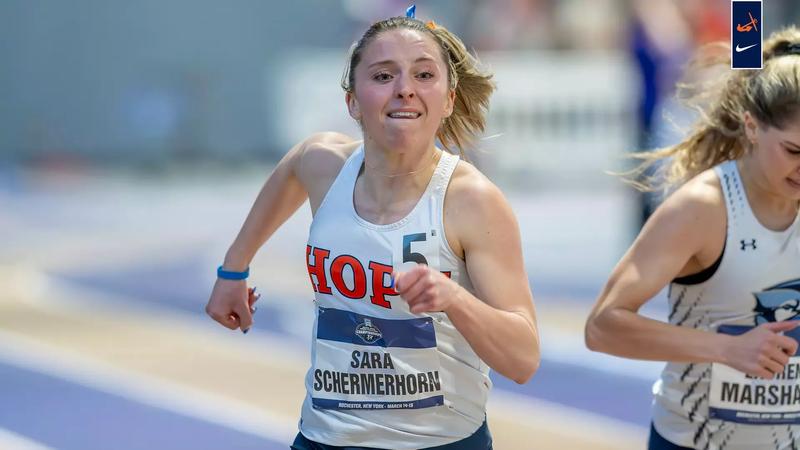
Hope College sprinter Sara Schermerhorn raced past a former teammate to win the 400-meter run at the indoor season–opening Grand Valley State University Holiday Open on Friday in Allendale.
The senior from Traverse City, Michigan (Traverse City West), posted a first-place time of 55.45 seconds to race past a field of 58 on GVSU’s 300-meter track. The run also was the fastest in NCAA Division III so far this season.
Schermerhorn crossed the finish line ahead of runner-up Catherine Leahy ’25. Leahy, who now competes for NCAA Division I Oakland University as a graduate student, finished in 57.43.
The meet, which featured NCAA Division I, II, III and NAIA competitors, was the first for head coach Jordan Bartolazzi coaching Schermerhorn, a four-time All-American over the past two indoor seasons.
“Sara is an exceptional worker, and she has all the intangibles,” Bartolazzi said. “She knows how to race and how to run with exceptional form.
“It was neat to see Catherine running. I would have loved to get her last year of eligibility this year, but I’m happy for her. She’s at a great school and will continue to do great things.”
The Flying Dutch delivered several more strong performances.
In the 1-mile run invite division, senior Molly Durow picked up where she left off after an All-American cross country season this fall.
Durow (Glenview, Illinois / Glenbrook South) clocked Division III’s top time with a runner-up effort of 4:58.97. Only Gabby Phelan of NCAA Division I Toledo University was faster, at 4:57.3.
Freshman Miranda Sawvel (Laramie, Colorado / Centennial) placed eighth in the event in 5:14.47.
The Flying Dutch posted Division III’s fifth-fastest 4×400 relay, with freshman Jaidyn Klimp (Galesburg, Michigan / Galesburg Augusta), senior Frances Cozzens (Lyman, New Hampshire / St. Johnsbury Academy), freshman Savana Monville (Auburn, Michigan / Bay City Western) and freshman Eliana Kotsonis (Menomonee Falls, Wisconsin / Hamilton) going 4:03.50. The relay finished seventh in the race.
Junior Mary England (Kalamazoo, Michigan / Kalamazoo Central) outraced the field in Heat 2 of the 3,000-meter run, recording a time of 10:20.07 that was sixth-fastest in Division III. England finished ahead of runner-up Jadie Chavez of the Division I University of Illinois at Chicago, who ran 10:32.51.
Freshman Taylor Mitchell (Otsego, Michigan / Otsego) took fourth in the heat at 10:38.00.
In Heat 2 of the 5,000-meter run, freshman Dylan Ballin (Brookville, Ohio / Brookville) led the Flying Dutch with a third-place time of 18:08.83. Ballin ranked 17th in the nation after Friday.
“I was really pleased,” Bartolazzi said. “We had great energy, as the men did. It was a good day for Hope track and field.”
Hope next competes Saturday, Jan. 24, at the Aurora University (Illinois) Grand Prix near Chicago.
Sports
Women’s Indoor Track and Field Starts Action at BU Sharon Colyear-Danvile Season Opener

BOSTON, MA (December 6, 2025) — The Tufts University women’s track and field team sent a small contingent of distance runners to the opening indoor track and field meet of the 2025-26 season, competing at the 2025 Boston University Sharon Colyear-Danville Season Opener at the BU Track and Tennis Center.
Sophomore Phoebe Bryar competed in the women’s 1500 meter run Saturday, and finished 31st overall in a very deep meet with many Division I and II schools competing. Bryar ran a 4:56.36 in the event, while the race continued for a mile time as she chalked up a 5:15.48 for a New England Regional qualifying time and 30th place.
Sonia Olson also ran in the same event, taking 37th in the in the 1500m en route with a 4:59.02. She would close with a time of 5:19.57 in the mile run.
First-year Zui Chinchalkar ran her first collegiate track race in the 3000 meter run, crossing the line in 10:02.06 for a Division III New England Regional qualifying time.
Senior Elizabeth Donahue ran a 16:54.83 in the women’s 5000m run, and junior Katya Henisz finished with a 17:13.13. Both times were regional qualifying times, as well as personal-best times in the event.
Tufts will have a few days off before heading to the Dartmouth College December Invitational Friday, December 12 in Hanover, NH.
–JUMBOS–
-

 Rec Sports2 weeks ago
Rec Sports2 weeks agoFirst Tee Winter Registration is open
-

 Rec Sports1 week ago
Rec Sports1 week agoFargo girl, 13, dies after collapsing during school basketball game – Grand Forks Herald
-

 Motorsports2 weeks ago
Motorsports2 weeks agoCPG Brands Like Allegra Are Betting on F1 for the First Time
-
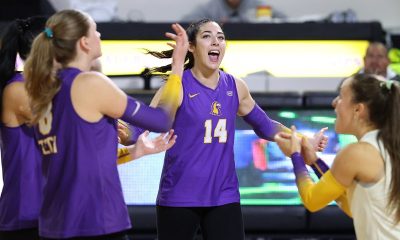
 Sports3 weeks ago
Sports3 weeks agoVolleyball Recaps – November 18
-

 Motorsports2 weeks ago
Motorsports2 weeks agoF1 Las Vegas: Verstappen win, Norris and Piastri DQ tighten 2025 title fight
-

 Sports2 weeks ago
Sports2 weeks agoTwo Pro Volleyball Leagues Serve Up Plans for Minnesota Teams
-
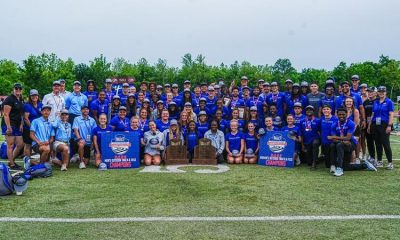
 Sports2 weeks ago
Sports2 weeks agoSycamores unveil 2026 track and field schedule
-

 Sports2 weeks ago
Sports2 weeks agoUtah State Announces 2025-26 Indoor Track & Field Schedule
-

 Motorsports1 week ago
Motorsports1 week agoRedemption Means First Pro Stock World Championship for Dallas Glenn
-

 NIL6 days ago
NIL6 days agoBowl Projections: ESPN predicts 12-team College Football Playoff bracket, full bowl slate after Week 14



















































